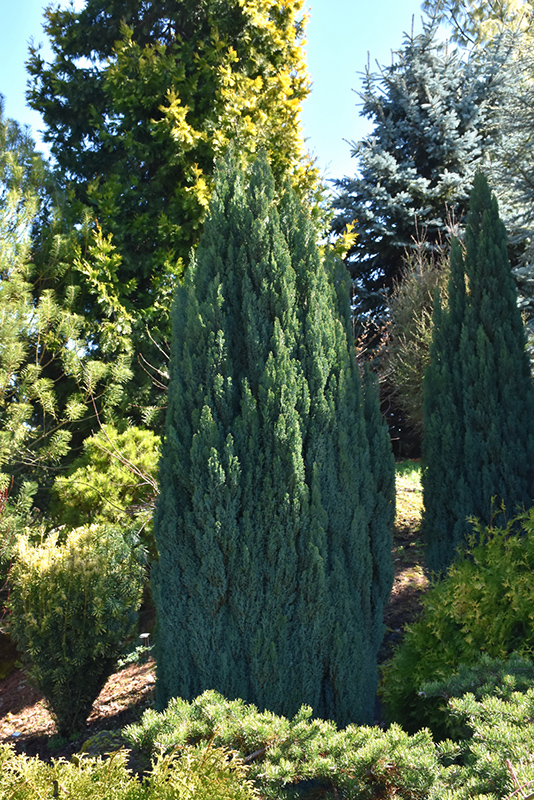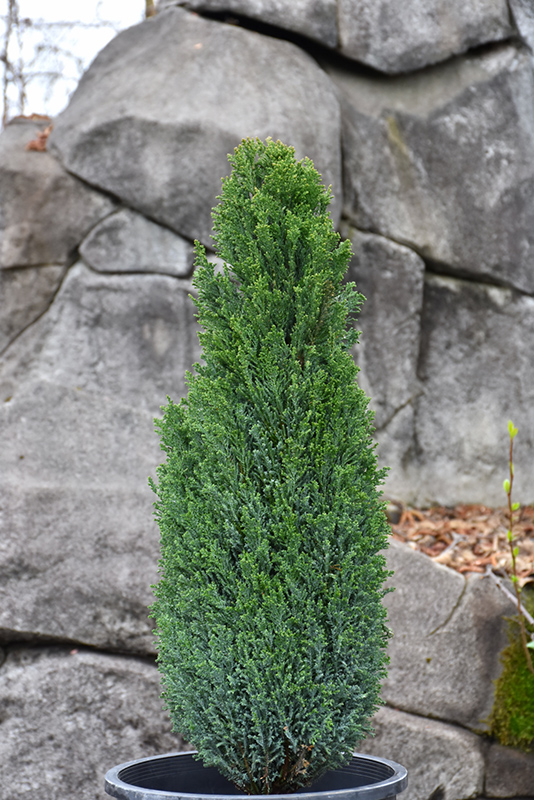Plant Finder
Ellwood's Pillar Lawson Falsecypress
Chamaecyparis lawsoniana 'Ellwood's Pillar'
Height: 7 feet
Spread: 30 inches
Sunlight:
![]()
![]()
Hardiness Zone: 5a
Other Names: Oregon Cedar, Port Orford Cedar
Description:
A dense and upright, very slow growing selection with a tightly columnar habit of growth; stunning dark blue-green foliage with grayish hues lends an air of formality to the landscape; great for smaller gardens, borders, and rockeries
Ornamental Features
Ellwood's Pillar Lawson Falsecypress is a dwarf conifer which is primarily valued in the landscape or garden for its rigidly columnar form. It has bluish-green foliage with hints of gray. The scale-like sprays of foliage remain bluish-green throughout the winter. The shaggy antique red bark adds an interesting dimension to the landscape.
Landscape Attributes
Ellwood's Pillar Lawson Falsecypress is a dense multi-stemmed evergreen shrub with a narrowly upright and columnar growth habit. Its relatively fine texture sets it apart from other landscape plants with less refined foliage.
This is a relatively low maintenance shrub. When pruning is necessary, it is recommended to only trim back the new growth of the current season, other than to remove any dieback. It has no significant negative characteristics.
Ellwood's Pillar Lawson Falsecypress is recommended for the following landscape applications;
- Accent
- Vertical Accent
Planting & Growing
Ellwood's Pillar Lawson Falsecypress will grow to be about 7 feet tall at maturity, with a spread of 30 inches. It has a low canopy with a typical clearance of 1 foot from the ground, and is suitable for planting under power lines. It grows at a medium rate, and under ideal conditions can be expected to live for 70 years or more.
This shrub does best in full sun to partial shade. It prefers to grow in average to moist conditions, and shouldn't be allowed to dry out. It is not particular as to soil type, but has a definite preference for acidic soils. It is somewhat tolerant of urban pollution. Consider applying a thick mulch around the root zone in winter to protect it in exposed locations or colder microclimates. This is a selection of a native North American species.





